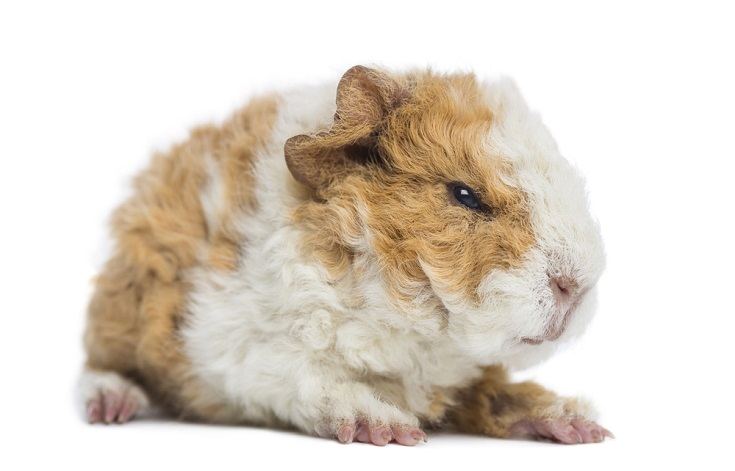17 Interesting Guinea Pig Facts That May Surprise You
Updated on

Guinea pigs are small, friendly rodents that make fantastic family pets. If you’re considering adopting a guinea pig (or two, preferably), you’ll want to learn as much as possible about the little guys before you bring one into your home. Read on to find 17 interesting guinea pig facts that will help you better understand this species and their suitability as pets.
The 17 Guinea Pig Facts
1. They Don’t Come From Guinea
The breed’s name might have you believe that guinea pigs hail from Guinea, but they actually don’t. Instead, these critters originated on the other side of the world in the Andes of South America. They were first domesticated for food by tribes in the present-day southern part of Peru, Ecuador, Bolivia, and Columbia. From the year 1200 to around 1532, the indigenous folks selectively bred guinea pigs to develop many of the modern domestic breeds we know and love today.
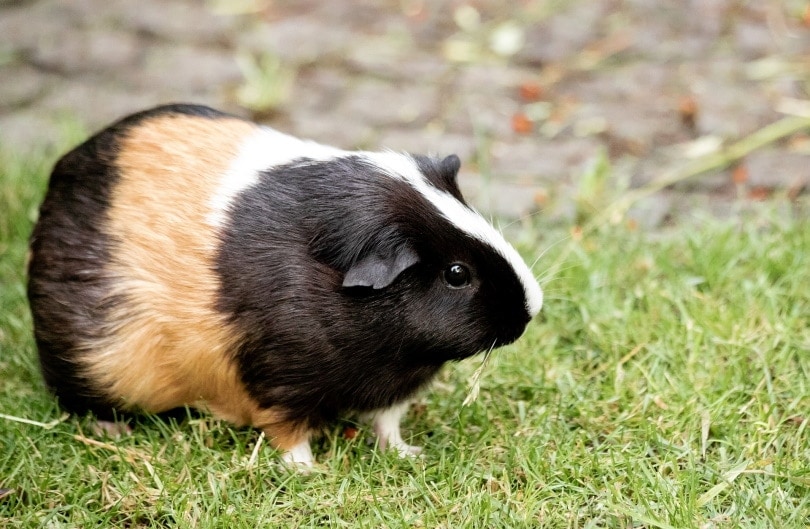
2. They’re Not Pigs
Their species name is, again, misleading as guinea pigs aren’t pigs at all. They’re not closely related biologically to pigs, and their name’s origin is unclear. They are a species of rodent belonging to the genus Cavia in the family Caviidae. The cavy family is composed of rodents native to South America, like the guinea pig, wild cavy, and the world’s largest living rodent, the capybara.
3. They Should Be Kept in Pairs
Guinea pigs are highly social creatures living in groups of five to ten in the wild. If you plan on keeping them as pets, you should keep them in pairs or small grounds to ensure your pets stay happy and healthy. The best pairings are either two females or a neutered male and a female. We do not recommend keeping more than one male as resource conflicts may arise.
4. They Sleep in Short Bursts
Guinea pigs are neither diurnal or nocturnal but a little bit of both. They sleep in short bursts, taking many short naps throughout their day. This is traced back to their wild roots, where they are prey animals and must be on alert 24/7/365 for predators. Even in captivity, guinea pigs can be awake for 20 hours of the day.
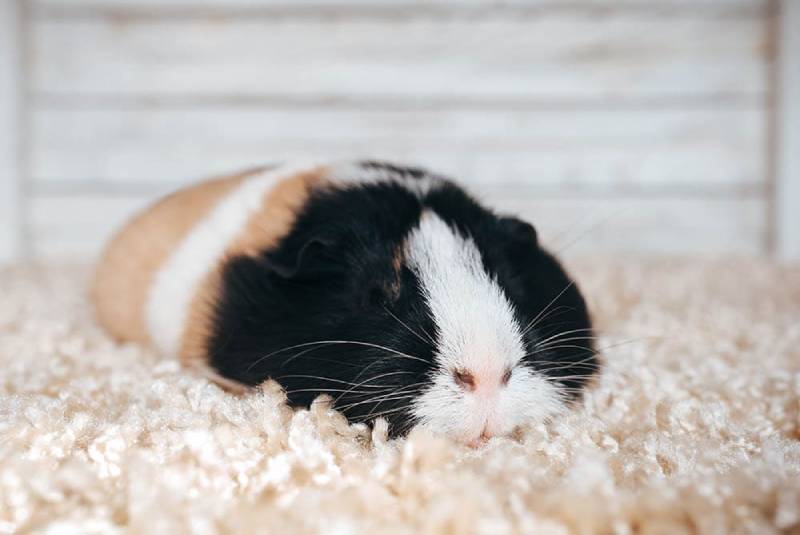
5. Their Teeth Never Stop Growing
Guinea pigs have open-rooted teeth, which means they’ll grow continuously. And though you might initially think your piggy only has two upper and lower teeth, they actually have twenty, and all of them can grow continually. It is their front incisors that can be prone to overgrowing, however. If the teeth become too long, they can cause discomfort and oral injuries. To combat this, you’ll need to ensure your piggy has plenty of food and chews to help wear down those teeth to the right length.
6. Babies Are on the Move Right Away
Guinea pig babies don’t waste any time growing up, as they are already running around just a few hours after birth. Baby pigs are born precocial, meaning they’re born in an advanced state. They have all their hair and teeth and can see and hear just like their adult counterparts.
7. There Are 13 Recognized Species
The American Cavy Breeders Association officially recognizes 13 species of guinea pigs, including Abyssinians, Americans, Coronets, Peruvians, Silkies, and Texels. Some breeds, like the American and Abyssinian, are also available in “satin” coats. In addition, though only 13 are recognized, many other “unofficial” breeds exist, like the Alpaca, Baldwin, or Himalayan guinea pig.
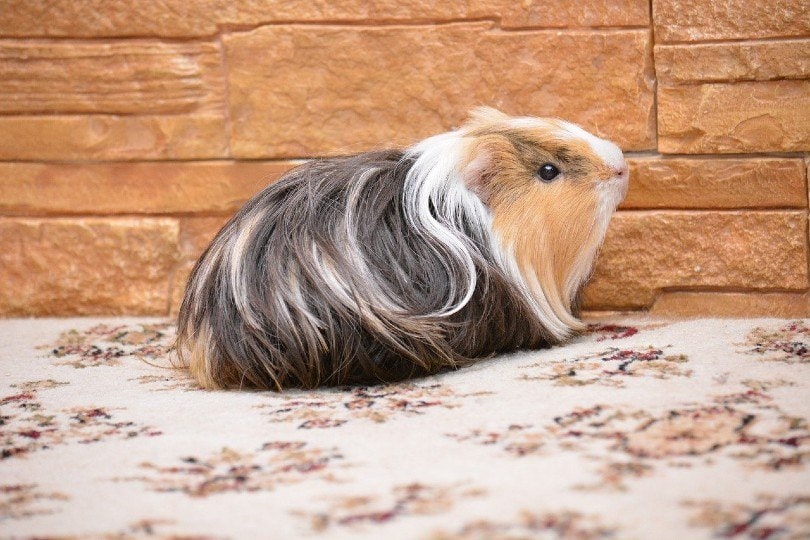
8. Satin Guinea Pigs Are Prone to Genetic Disorders
As mentioned above, some breeds of guinea pigs come in a ‘satin’ variety. These coats have a distinctive shiny and almost glass-like appearance to them. While beautiful, this coat type could spell trouble for your piggy.
The gene that causes the satin texture could cause disease symptoms like lameness, dental malocclusion, and failure to thrive. In addition, many satin piggies will develop an incurable and painful metabolic bone disease called osteodystrophy that reduces their lifespan and quality of life.
9. They Have to Eat Their Own Poop
Guinea pigs excrete two types of poop. The first kind is the one we all know and expect our pets to produce, while the second is a compound of vitamins and proteins. It’s this second poop type that your piggy will eat. These poops, called caecotrophs, are smellier and squishier than traditional poos. Chances are you’ll rarely see them in your pig’s habitat as your pet will eat them as soon as they know one is about to come out. If they don’t eat these poops, they could become malnourished.
10. Most Have 14 Toes
Guinea pigs have four toes on each front paw and three on their hind paws, resulting in fourteen toes total. This unique foot structure is useful for wild guinea pigs that need to burrow and tunnel, but it’s also partially to blame for the species’ poor climbing skills.
Some guinea pigs are polydactyly, meaning they’ll have extra toes.
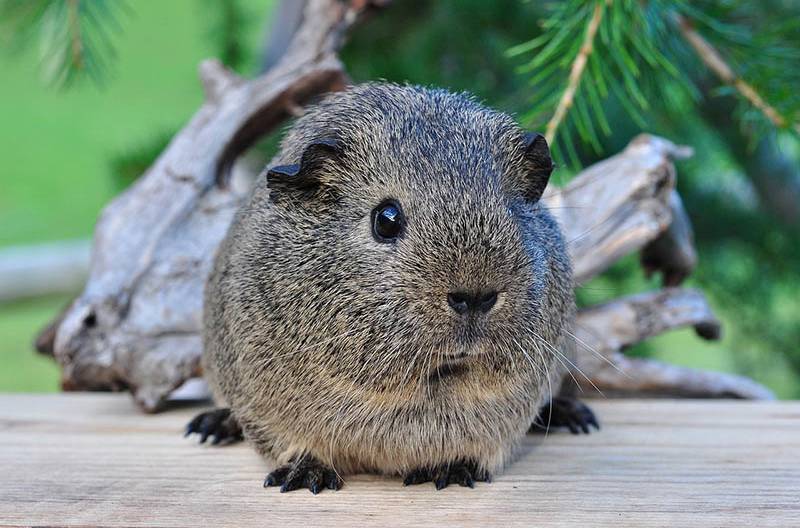
11. They Can Swim
Guinea pigs can swim as it’s a survival skill they’ve evolved to help wild pigs escape predators or save themselves from the water they’ve fallen into. It’s important to note here that while most guinea pigs can swim, most do not like it. However, this isn’t an activity you should encourage your piggy to participate in, as they’re not physiologically built for it. Swimming can also cause your piggy to develop ear infections or pneumonia.
12. They Can “Popcorn”
Though they’re not known for their jumping or climbing skills, when guinea pigs are very happy, they’ll start jumping up and down quickly. These jumps can happen mid-stride, while your piggy is running around in its cage, or when it’s already in a standing position. This adorable behavior has earned the nickname “popcorning” as it looks like a kernel of corn popping in the microwave.
13. They Sleep With Their Eyes Open
Guinea pigs are prey animals, so it’s natural to be hyper-alert to their surroundings. In the wild, predators like hawks and wolves often snatch them up while asleep. So even if your home is safe and no predators are nearby, most guinea pigs will sleep with their eyes wide open.
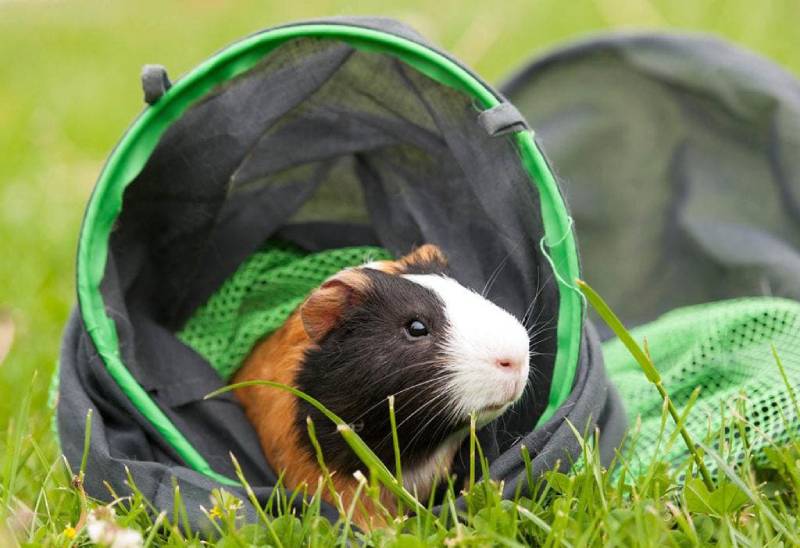
14. They Have Many Different Coat Patterns and Textures
Like dogs and cats, guinea pigs can have many different coat patterns, colors, and textures.
Some of the most common coat patterns include agouti, brindle, magpie, tortoiseshell, and Himalayan. They are seen in chocolate, black, beige, lilac, cream, red, golden, and slate colors. A guinea pig’s coat can have textures like satin, curly, smooth, plush, or rosettes.
15. They’re Chatterboxes
Guinea pigs have many different sounds or vocalizations that owners will eventually acquaint themselves with. These sounds say a lot about the pig’s mood, so it’s important to pay close attention to learn when and why your piggy is vocalizing the way it is.
“Wheeking”, for example, is the most common vocalization guinea pigs make. It’s used to communicate anticipation or excitement, so your piggy may start wheeking when it hears you opening its bag of vegetables.
Purring is another sound that can indicate different feelings depending on the pitch and accompanying body language. For example, guinea pigs that feel content and happy can make deep purring sounds, while those who are making higher-pitched purrs may be annoyed.
All-in-all, piggies can make around 11 individual sounds.
16. July 16 is Guinea Pig Appreciation Day
There’s no better day to celebrate the guinea pig than July 16, the official Guinea Pig Appreciation Day. The first-ever appreciation day was held in 2016 and organized by Piggles Rescue in Canada.

17. They Have Very Good Hearing
Guinea pigs have a great sense of hearing and can identify sound waves in the ultrasonic range. They can hear noises of up to 50,000Hz and even detect sounds up to two miles away. In comparison, humans can detect frequencies between 16 and 20 Hz.
Final Thoughts
Guinea pigs are adorable little critters with a lot to offer as pets, so if you plan on adopting one, you will surely be happy with the new addition to your herd. We hope our blog has helped shed some light on the species so you can enter guinea pig ownership knowing all there is to know about this unique pet.
Featured Image Credit: Miroslav Hlavko, Shutterstock

